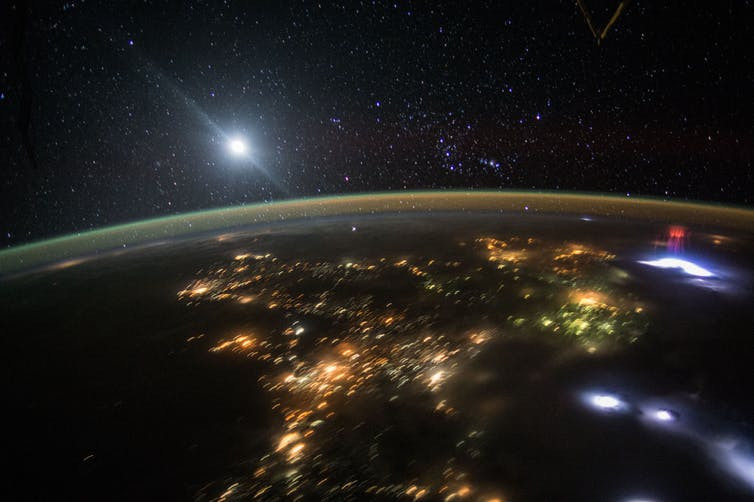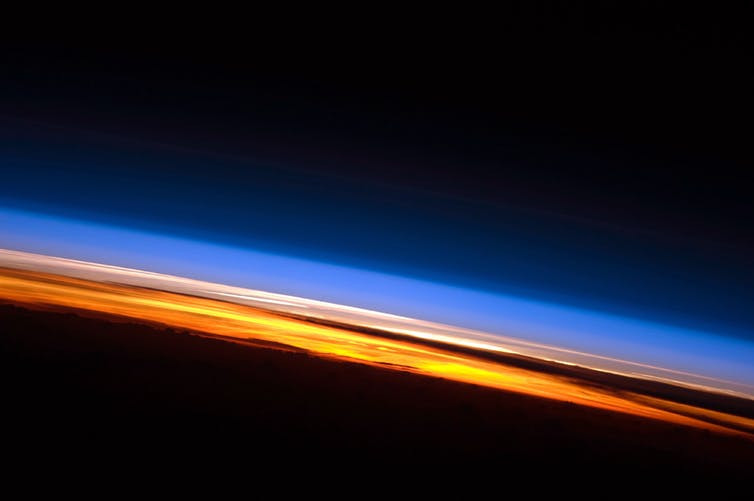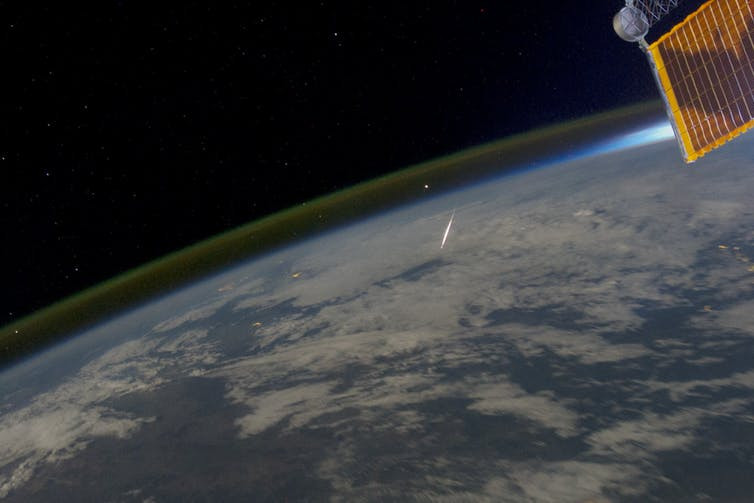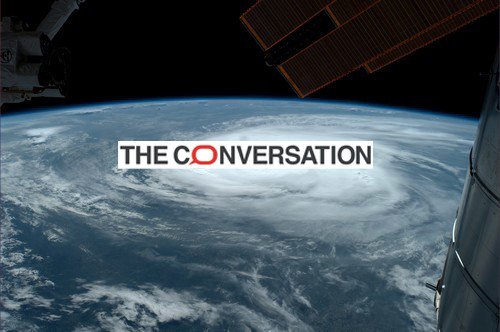The ISS doesn’t just offer spectacular and countless views of the natural and man-made landscapes of our planet. It also immerses its residents into the Earth’s space environment and reveals how dynamic its atmosphere is, from its lower layers to its protective magnetic shield, constantly swept by the solar wind.
The best views are seen from the Cupola, an observation deck module attached to the ISS in 2010 and comprising seven windows. So, what are the amazing sights that you can see from the space station?
1. Storms and lightning

When the ISS orbits over a sea of thunderclouds, it’s not rare for astronauts to witness an impressive amount of lightning. What is unusual, however, is seeing lightning sprites, which were observed on August 10th by astronauts aboard the space station.

ISS astronauts spotted a sprite (the red jellyfish-like structure on the right of the image) appearing above thunder clouds on August 10, 2015. NASA
Sprites are electrical discharges, similar to thunder lights. However, instead of occurring in the lower layer of Earth’s atmosphere, these very fast, red-coloured discharges (due to the excited nitrogen at this altitude) occur much higher up and are as such difficult to observe from the ground.
2. Sunrises and sunsets

Sunset over the Indian Ocean. NASA/ESA/G Bacon
With the ISS orbiting the Earth every 90 minutes, astronauts can see the Sun rise and set around 16 times every 24 hours. The dramatic views from the station display a rainbow-like horizon as the Sun appears and disappears beyond the horizon.
Swiftly flow the days
The changes in colour are due to the angle of the solar rays and their scattering in the Earth’s atmosphere. If similar jaw-dropping views can be seen from Earth, seeing our mother planet lit up in the rising Sun certainly adds to the intensity of the picture.
3. Stars and the Milky Way
Amazing sightings of distant astronomical objects as seen from the space shuttle
From the ground, atmospheric conditions and light pollution affect our ability to see stars and other celestial bodies. As light travels through layers of hot and cold air, the bending of its rays render a flickering image of these distant objects, while atmospheric particles such as dust prevent from seeing fainter objects such as nebulae and galaxies. The lack of an atmosphere at the orbiting altitude of the ISS allows the residents on the space station to see the stars, the Milky Way and other astronomical features with much greater clarity than is possible on Earth.
4. Meteor showers

The disintegration of a Perseid meteor photographed in August 2011 from the ISS. NASA
Astronauts aboard the ISS can also witness the disintegration of meteoroids in the Earth’s atmosphere. Those small bodies are fragments detached from celestial bodies such as asteroids and comets. As they enter in the Earth’s atmosphere at great speed, the heat due to the body interaction with air rapidly destroys them. Whereas the chance of seeing them from the ground is very much weather dependent, being on the ISS guarantees the best seats to watch these shooting stars flaming across our planet’s sky.
5. Auroras

Also known as northern and southern lights, auroras are created when solar storms, consisting of large magnetised clouds of energetic particles launched from the sun, or strong solar wind, interact with the Earth’s magnetic shield. Upon collision with the Earth, these solar streams energise particles within the planet’s magnetic shield.
Time lapses showing the ISS travelling through auroras
When they enter the upper layer of the Earth’s atmosphere, these energetic particles excite nitrogen and oxygen atoms present at these altitudes. Then when they return from their excited state, these atoms emit light of different colours indicative of the amount of energy they absorbed. This typically produces green and red, ribbon-like curtains.
6. Cosmic rays
Galactic cosmic rays aren’t really a phenomenon you can see. These energetic sub-atomic particles come from intense astronomical sources such as exploding stars or black holes. If they pass into the body they can damage tissue and break DNA, causing various diseases over the course of time.
Most cosmic rays do not penetrate in the thick atmosphere of the Earth. Since the ISS sits outside this protected zone, its astronauts are much more likely to be struck by the particles. Astronauts regularly see flashes of light when they close their eyes, which is thought to be caused by cosmic rays interacting with body parts that play role in vision, such as the optic nerve or visual centres in the brain.
Solar storms, which have a strong magnetic structure, act as a shield against cosmic rays. A solar storm passing by the Earth can be indirectly witnessed by astronauts aboard the ISS via a drop in the count of cosmic rays, also known as the “Forbush decrease”. What a sensation it must be to “feel” a storm passing by the Earth’s system.
Source : The Conversation
Other articles from the same author
Discover research projects related to the topic
Sustainable Living & City
Climate Change
Climate Adaptation & Resilience
Urban Planning
Resilient Infrastructure & Safety
Environmental Justice
Post-Doctoral Fellowship
Australia
2023.06.20
Indicators for Climate Resilient City Planning
Expected start date:June-2023 Cities contribute enormously to global greenhouse emissions and are key drivers of climate change. By the same... Read more

Melanie
LOWE



